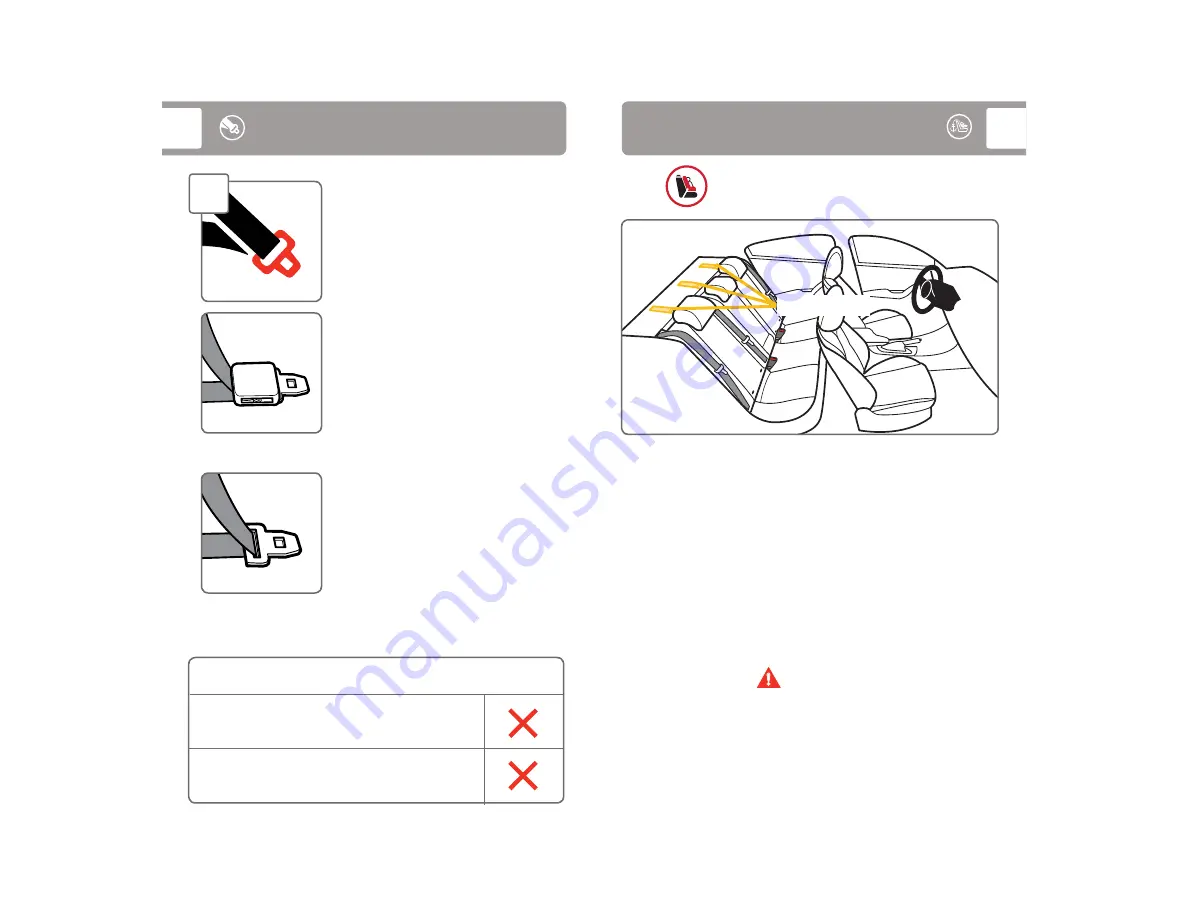
25
Locking Latch Plate
Emergency Locking
Retractor with a
Sliding Latch Plate
Emergency Locking Retractor Lap Only Belt
Infl atable Seat Belts
Never Use With This Child Restraint
4
Check the Latch Plates
Latch plates are the part of
the seat belt that goes into the
buckle.
To see if the latch plate locks:
Buckle the vehicle belt.
Then firmly tug the lap portion of the
seat belt while pulling it up.
If the vehicle belt does not slide
through the latch plate, it’s locked.
If the latch plate slides up and down
the vehicle belt, it is a
sliding latch
plate
.
Sliding latch plates easily slip between
the lap and shoulder portions of the
belt.
If you have an Emergency Locking
Retractor with a Sliding Latch Plate,
you must use a locking clip.
Please contact us for one.
See page 77.
Tether Use
26
Your vehicle’s features may be considerably different
than those pictured here.
You
must always
attach, adjust, and secure the top anchorage
(tether) strap
when installing the child restraint forward-facing
with internal harness. Tethers improve the installation and stability
of child restraints and reduce the risk of injury.
Attach the tether hook to the tether anchor designated by your
vehicle manufacturer for that seating position. Check your vehicle
owner’s manual for more information.
If the seating position does not have a tether anchor, use a different
seating position or see your dealer or a qualified mechanic and
have one installed.
WARNINGS
Using this child restraint without the tether strap anchored as
recommended by the manufacturer would be a misuse of the
child restraint and, in a sudden stop or crash, could result in
serious injury or death.
Do not fasten multiple tether hooks on the same tether anchor
in the vehicle.
For Forward-Facing Mode Only
Tether Anchors
continued on next page












































